
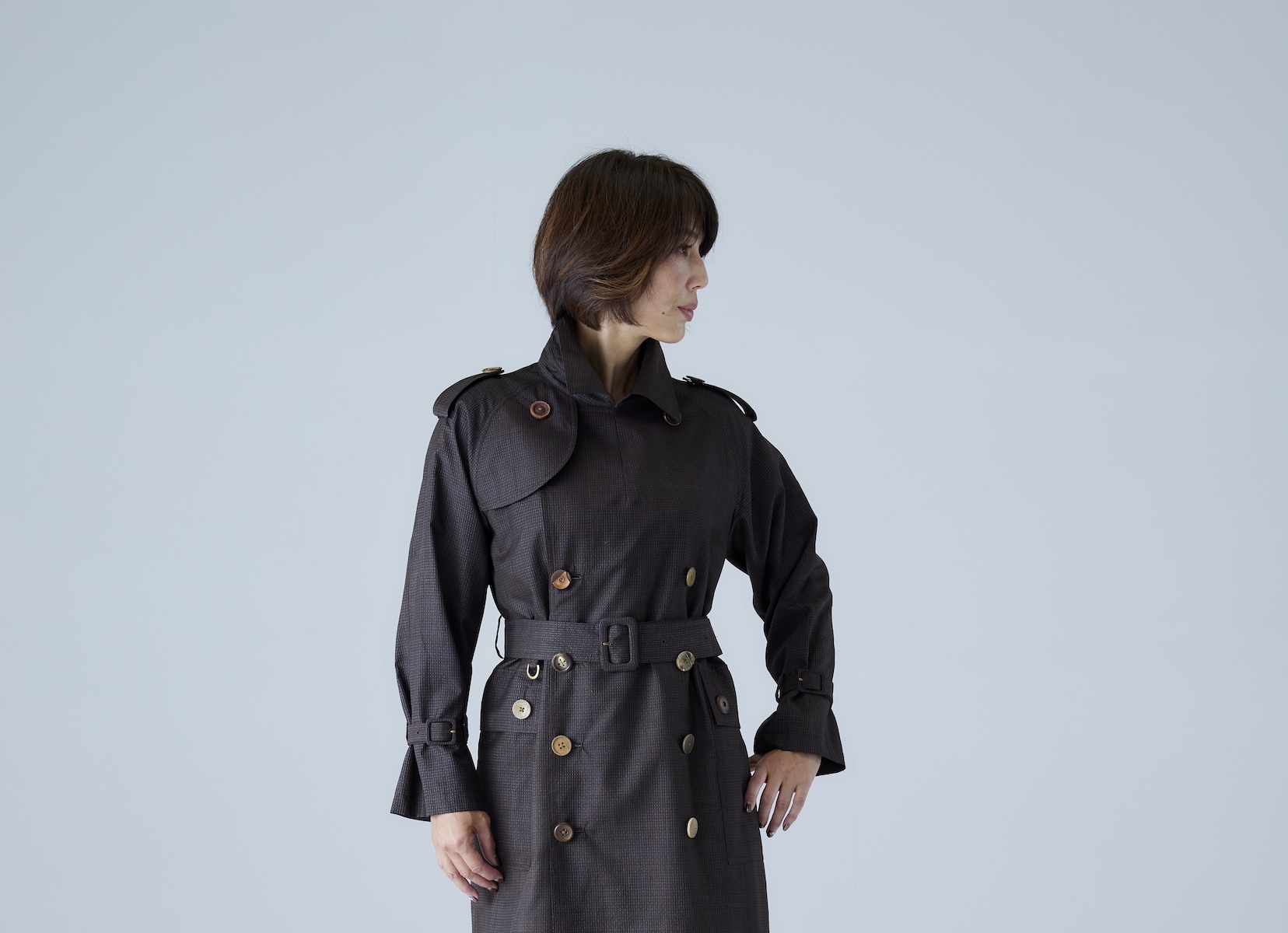
“Oshima tsumugi,” along with France’ s “Gobelins tapestry” and Iran’ s “Persian carpets,” stands as one of the world’ s most revered textile treasures.
フランスの「ゴブラン織」、イランの「ペルシャ絨毯」と並び世界三大織物に数えられる「大島紬」。鹿児島県奄美大島が生み出した、日本が誇る絹織物です。
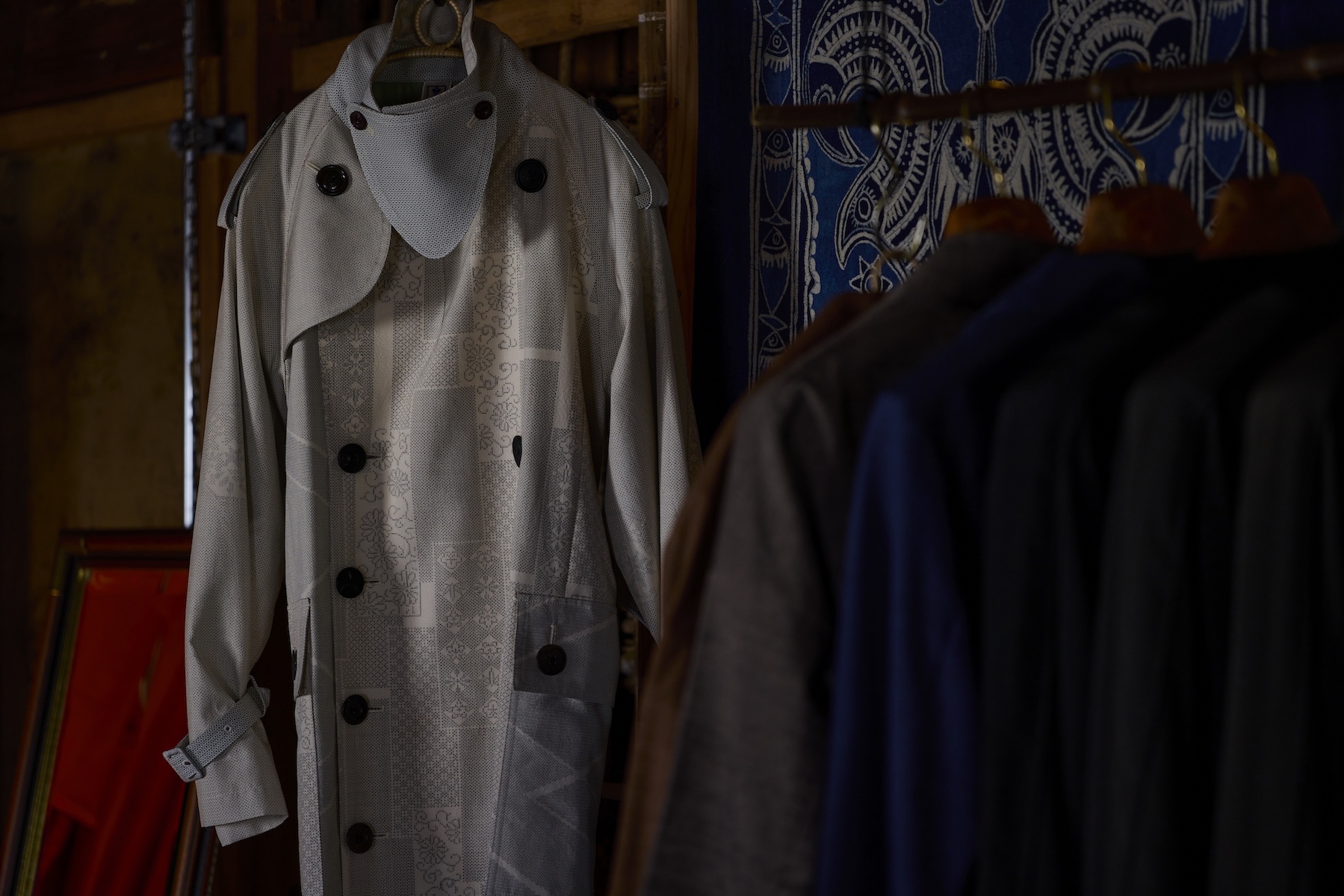
This exquisite silk fabric, a symbol of Japan’ s rich heritage, is meticulously woven on Amami Oshima Island in Kagoshima Prefecture. The artistry of “mud dyeing” involves a two-step process: raw silk is first immersed in a dye derived from the bark of the heirloom plum (known as “tecch” in Japanese) and then soaked in the island’ s unique mud fields. Crafting a single piece of this extraordinary fabric may span several years and encompasses more than thirty intricate steps. The fabric's delicate rustling as it moves adds to its serene beauty.
車輪梅(テーチ木)の樹皮を煮出した液で正絹生糸を染めた後、泥田に漬ける2段階染色によって行われる「泥染め」。1反織り上げるのに数年もの時間を要する事もあるこの美しい織物は、なんと30以上もの工程を経て生み出されます。
動くたび「シュッ」っと鳴る小気味よい絹擦れの音。
Each design and pattern within “Oshima tsumugi” tells a story, evoking the marvels of history, culture, and the masterful artistry of our ancestors.
図柄や紋様にはそれぞれ意味があり、歴史と風土と先人たちの営みが生み出した奇跡を感じずにはいられません。
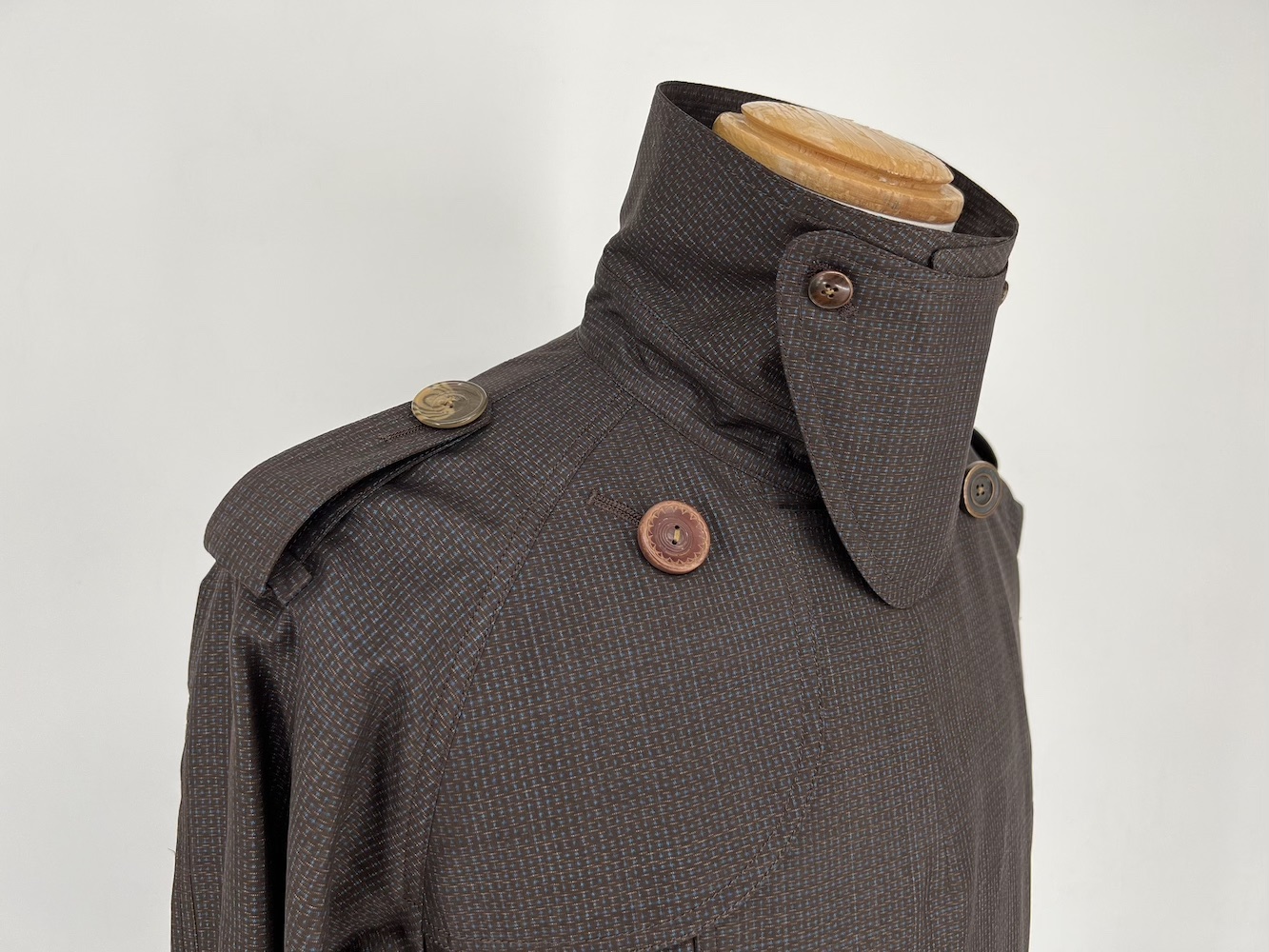
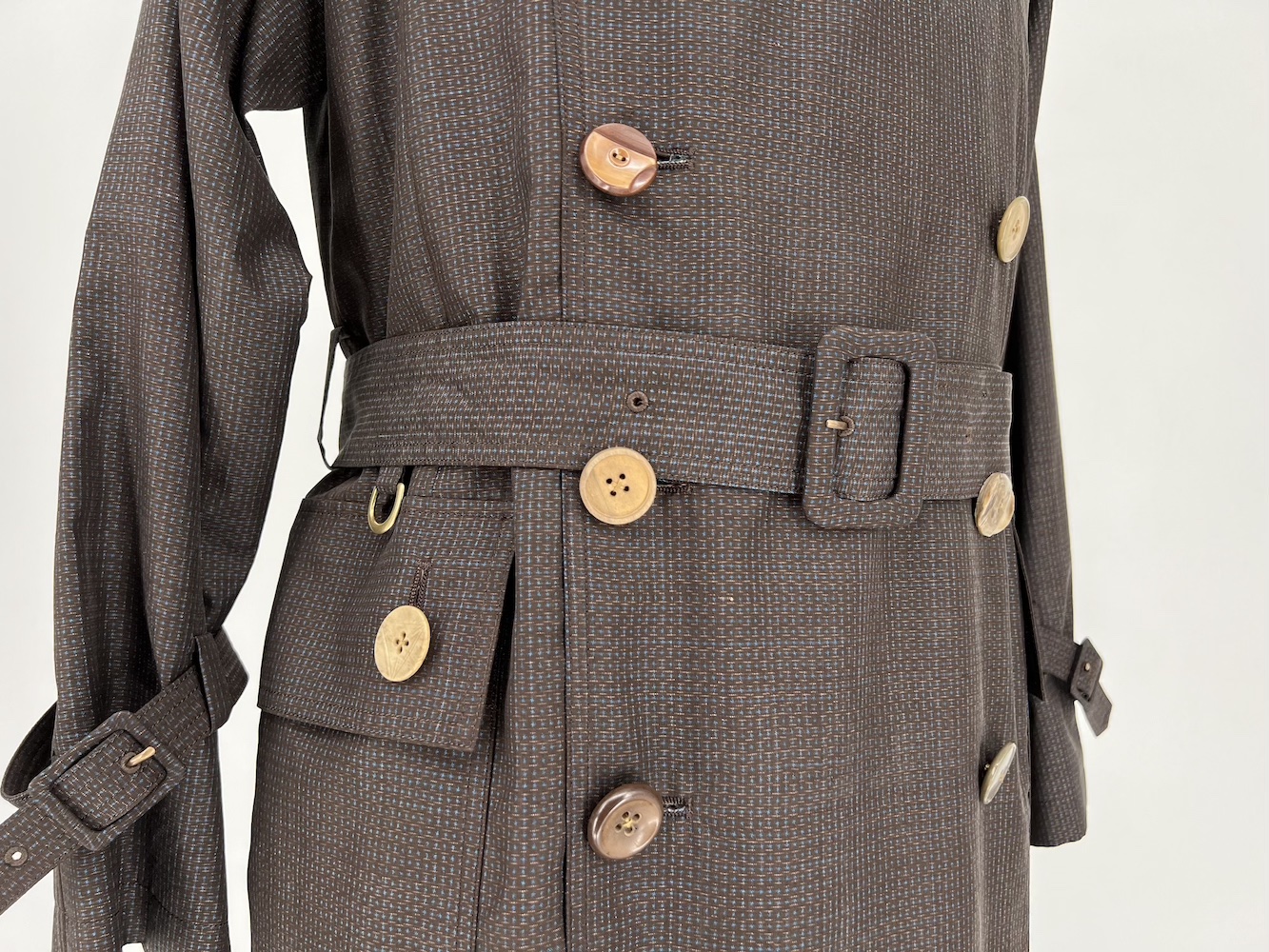
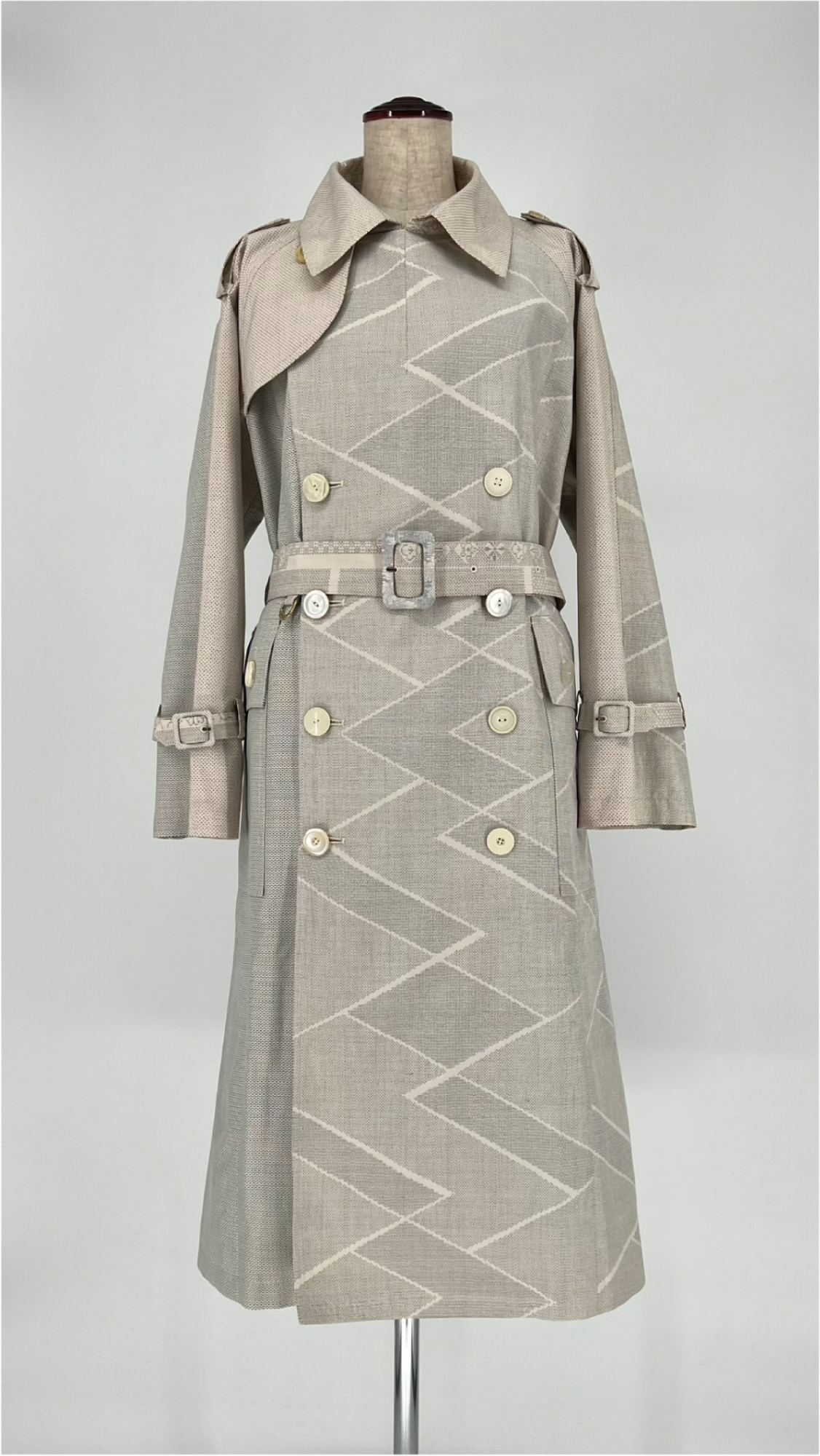
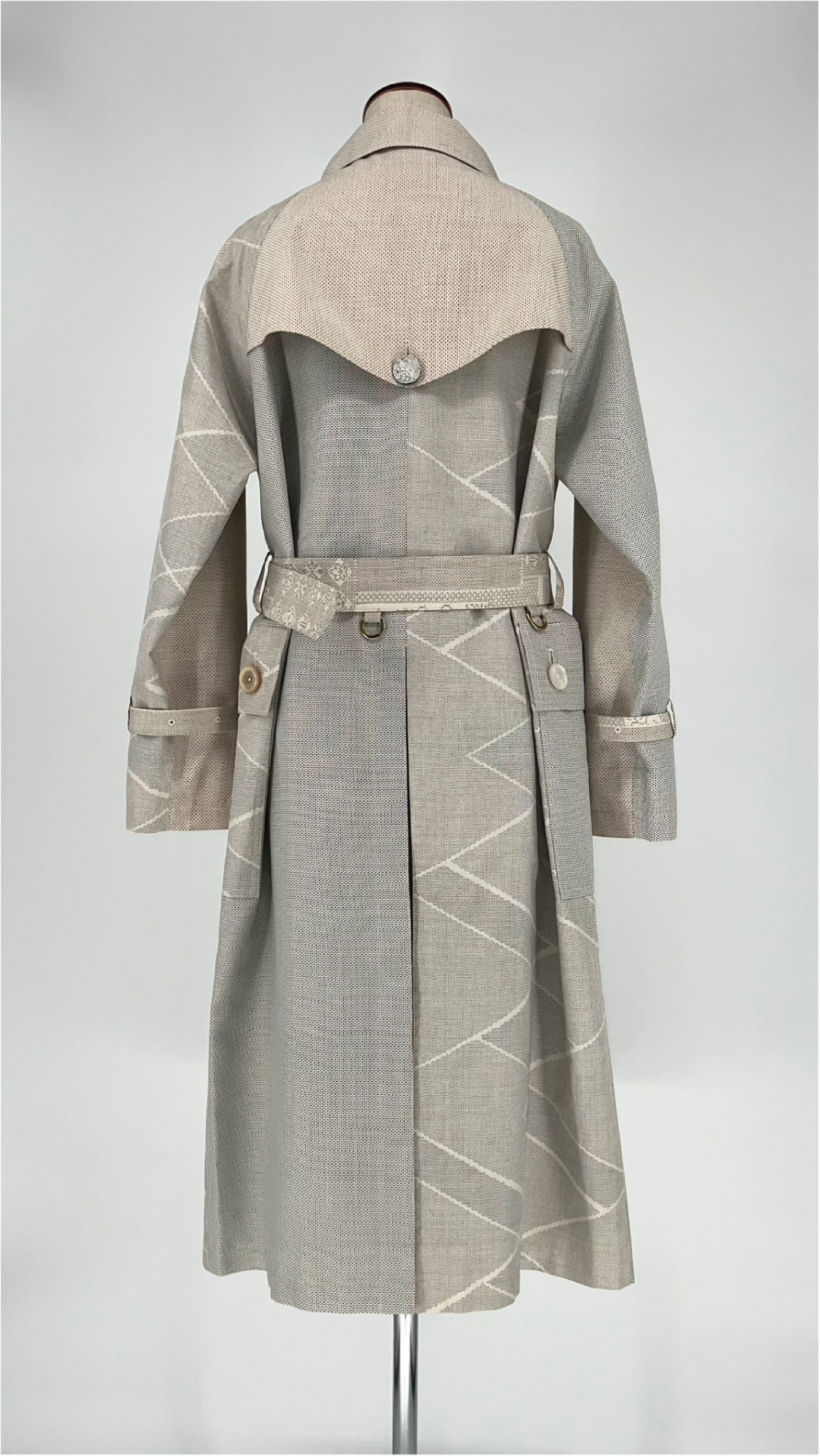
The trench coat
The trench coat, a distinguished icon in outerwear, was conceived in early 20th-century England as a form of military uniforms. Its name, “trench,” signifies its design’ s suitability for the rain-soaked and muddy conditions of World War I trenches. Historical accounts suggest that the trench coat, as we know it today, got more fashion attention in 1915 following several design revisions.
トレンチコート。
コートの中でも格別の存在感を誇るその製品は、1900年代初頭に軍服としてイギリスで誕生。「トレンチ(塹壕)」の称は、このコートが第一次大戦で多く生じた泥濘地(でいねいち)での塹壕戦で耐候性を発揮したことによる、とあります。文献を辿ると、数々のモデルチェンジを経て1915年(大正4年)に「トレンチコート」という名称が備わった製品がつくられたようです。
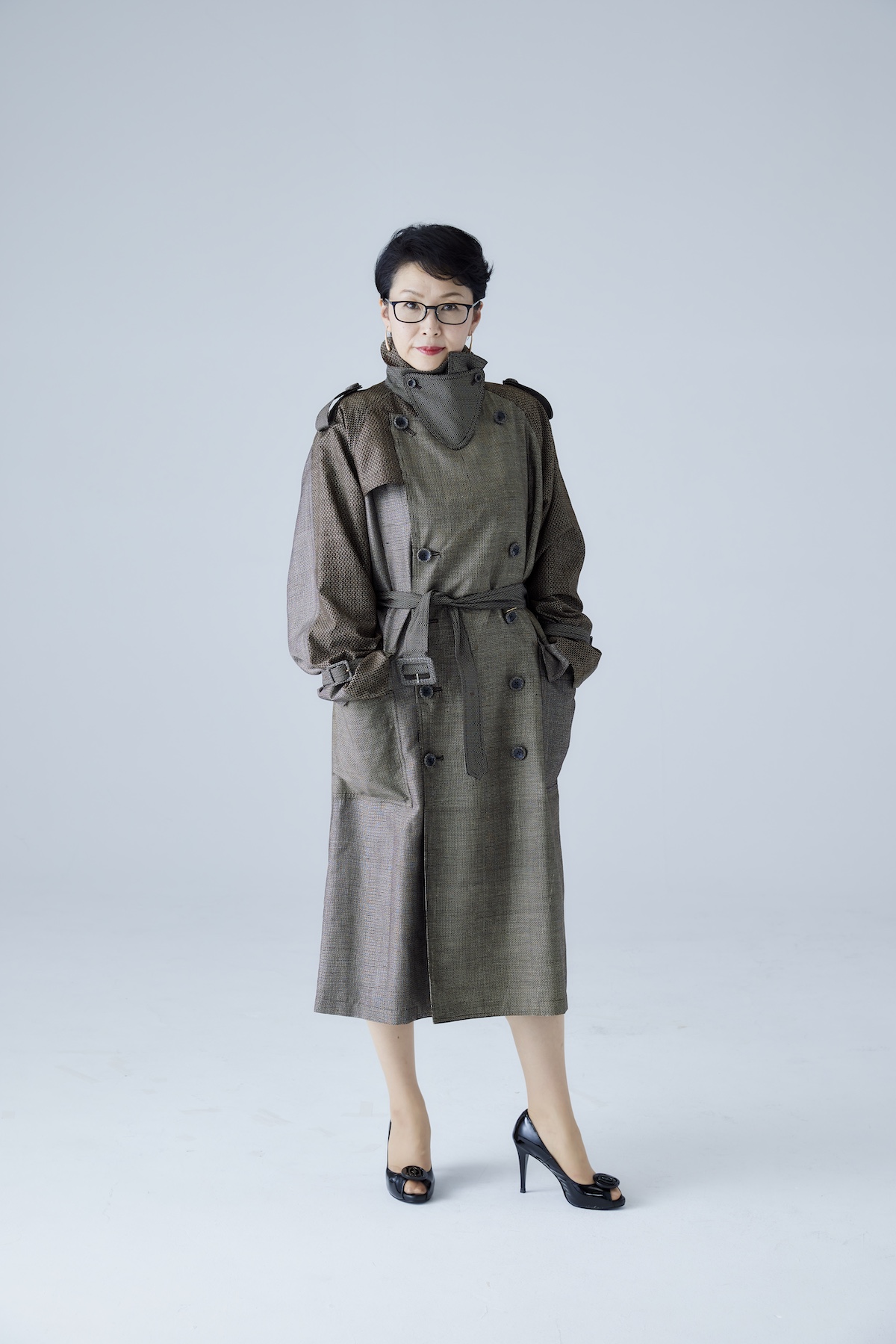
The coat's features—flaps, belts, and epaulets—were thoughtfully designed to serve various battlefield requirements. While there is no direct link between the trench coat’ s “muddy battlefield” origins and the “mud-dyed silk threads” of Oshima tsumugi, the common thread of “mud” serendipitously unites them, resulting in a product of exceptional sophistication. The enduring qualities of Oshima tsumugi—its strength and suppleness that endure for over a century—were pivotal in our selection of this material.
製品の至る所に散見されるフラップやベルト、エポーレットは、戦闘時様々な状況下で機能するディティールでした。「泥濘地戦用に開発されたトレンチコート」と、「泥染めした正絹糸で織る大島紬」に関連性は全くありませんが、「泥」という共通するキーワードを頼りにそのふたつを掛け合わせてみたところ、偶然にも極めて趣のある製品となりました。大島紬の特徴である「100年経っても変わらない強さとしなやかさ」という点も、採用した大きな理由です。
AITTA’ s trench coats elegantly merge the classic design of the trench coat with contemporary fashion sensibilities—a hybrid of tradition and modernity. This approach reflects our profound appreciation for both heritage and innovation. Given the trench coat’ s length and its myriad components, such as flaps and belts, a single kimono is insufficient for its construction. To address this, we employ the “crazy pattern” tailoring technique, utilizing multiple Oshima tsumugi kimonos. Our commitment to sustainability is evident as surplus fabric from one garment is ingeniously repurposed in subsequent pieces. This methodology embodies our modern production philosophy, which cherishes both the spirit of “mottainai” (the Japanese principle of minimizing waste) and an inventive creativity.
AITTA のトレンチコートは、トレンチコートが誕生した際のデザインと、その後ファッションアイテムとして取り入れられた際のデザインの双方をベースとした、言わばハイブリッド型。そのレシピには、私たちの特別な想いを込めています。トレンチコートは着丈が長い上、フラップやベルトなどのパーツが多数付属するため、コート1着を仕立てるのに着物1着では足りません。大島紬の着物を複数用いるため、「クレイジーパターン」の手法を取り入れる事にしました。生地を余す事なく使い切る方針上、1着目で余った生地は2着目以降へ。2着目で余った生地は3着目以降へ繰り越してつくっていきます。「もったいない」の精神や「遊び心」が宿る、サステナビリティを重んじる現代において重要な生産スタイルと考えています。
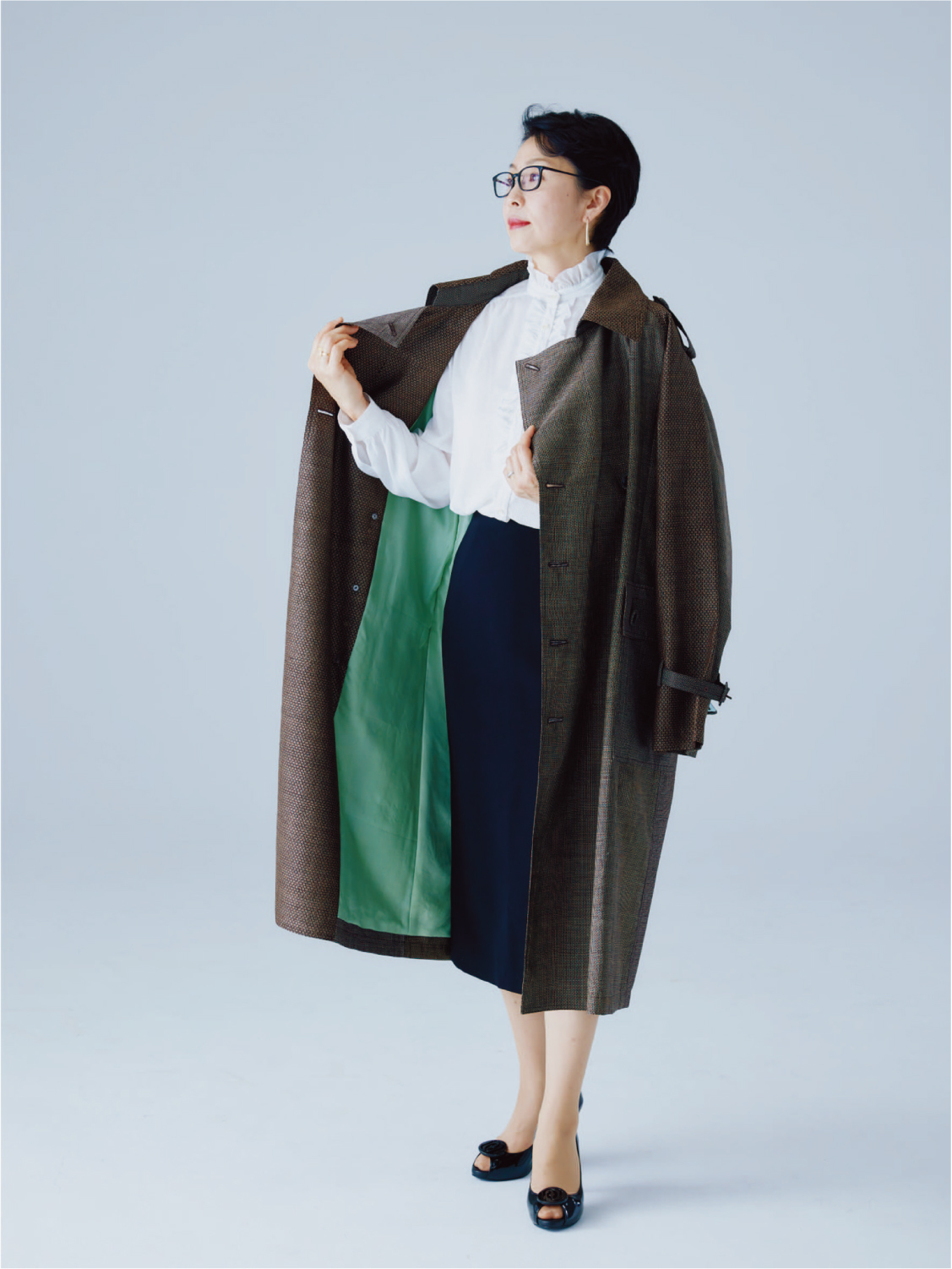
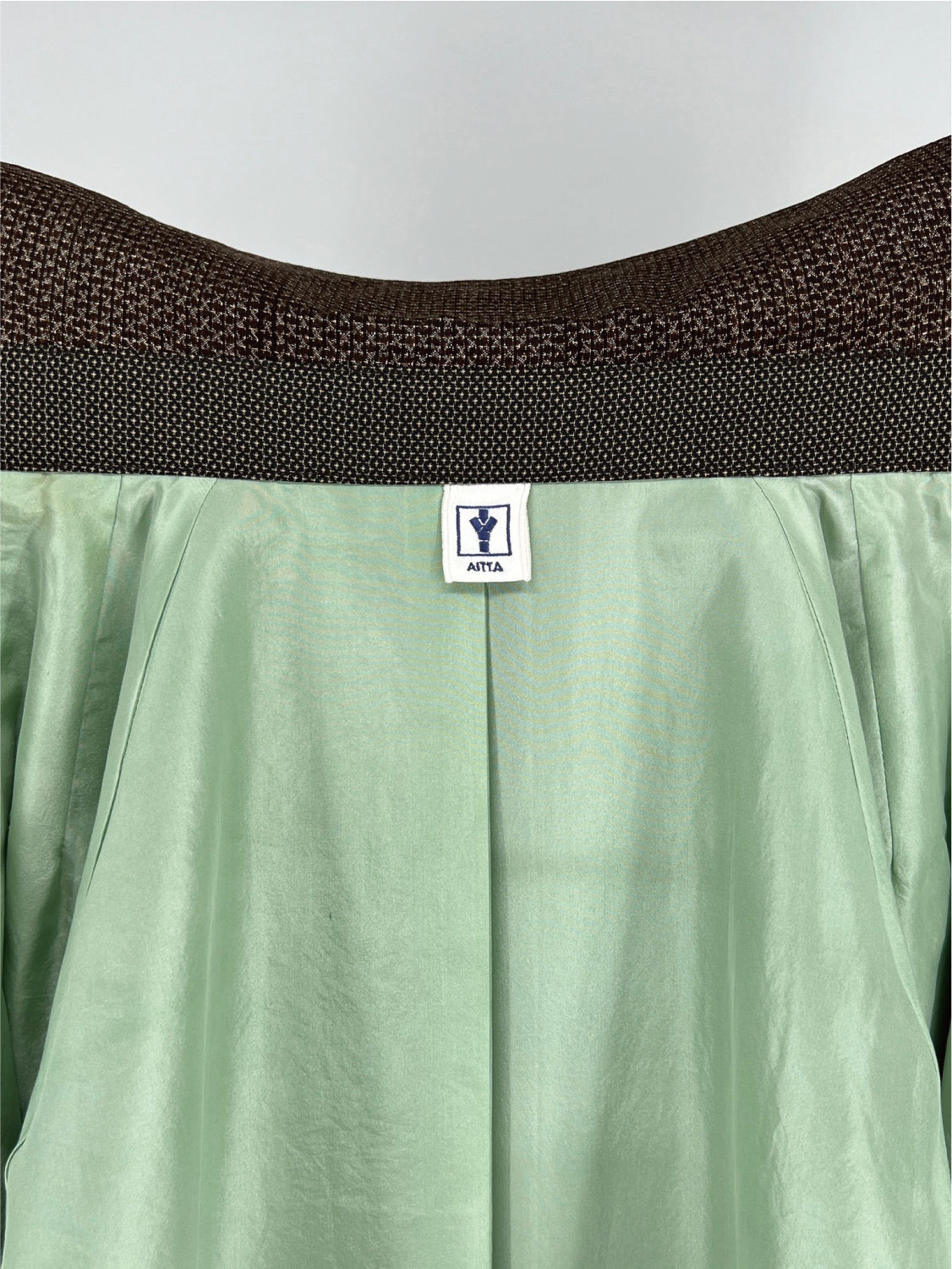
The “uraji,” or inner lining of our fabric products, is crafted from unused vintage stock. Though the silk lining may naturally acquire a yellow patina over time, it is dyed with mulberry leaves to achieve a striking “moe-geek” hue. This practice reflects the Edo period tradition of “Ura-Katsuuri”— where the inner lining of garments was designed to be more opulent and refined than the exterior, a custom born from the restrictions on overt luxury. This uniquely Japanese aesthetic values concealed beauty, as exemplified by our meticulous attention to the linings.
裏地にはデッドストックの胴裏を使用。未使用の状態でも、経年により黄変するのが正絹胴裏。それらを桑の葉で染め上げ、目を引く萌葱色にしています。「裏勝り」という言葉があります。奢侈禁止令がきっかけとなり表よりも裏に派手さや豪華さを置く、特に男物の和服に見られる江戸時代の風習。表からは見えないところに目を引く色や絵を忍ばせる、日本独自で発展を遂げた美意識。そんな「裏勝り」を踏襲した仕立てとしました。
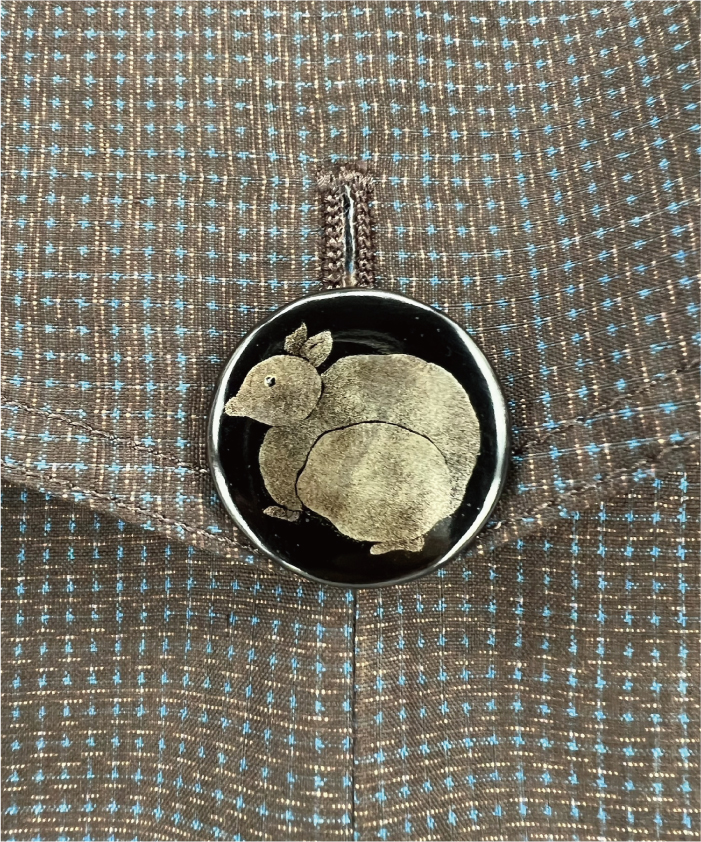
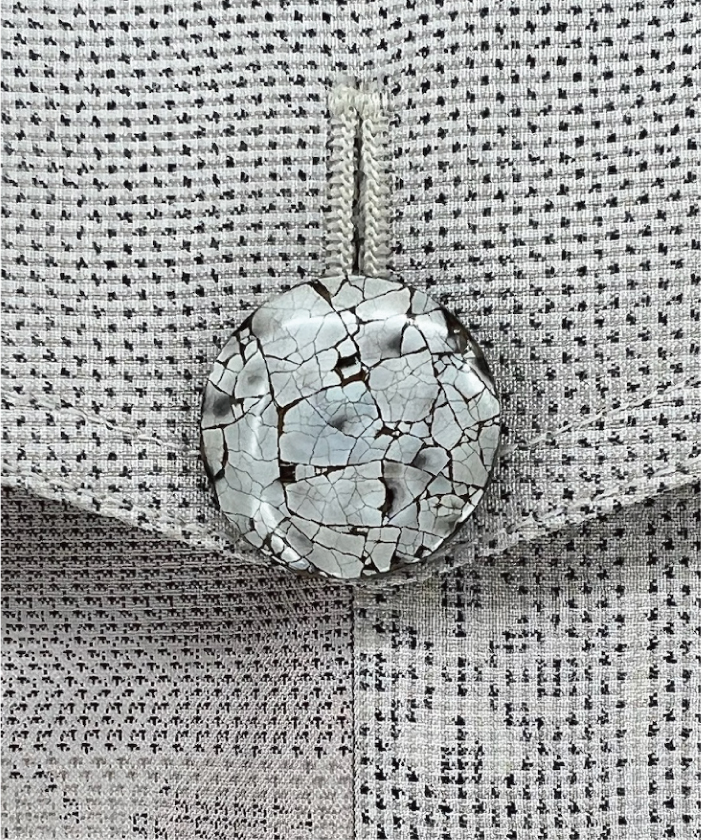
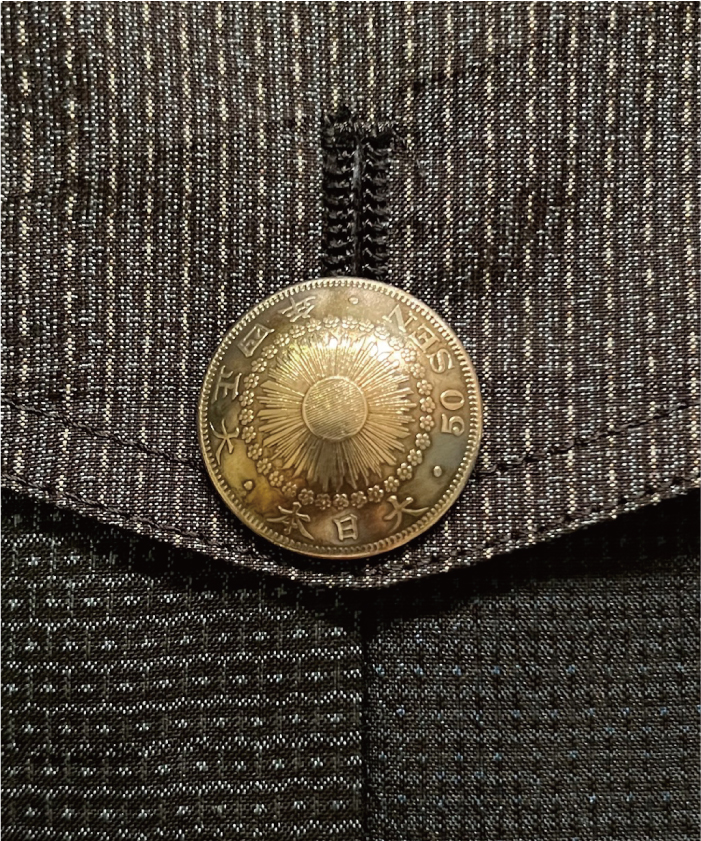
Each garment features an array of distinctive buttons, carefully selected for their unique character. We choose buttons such as antique French pieces, each singular in its design. The storm flap on the back can be adorned with a special button, such as a glass
“French antique button” lacquered with eggshells by a lacquer artist, or a bespoke piece fashioned 50 yuan silver coin from 1950. We invest considerable effort and time into these elaborate designs.
ボタンはその1着毎に様々なものを設えます。共地によるくるみボタン、1点1点異なるフランスのアンティークボタンなど、その都度個性のあるボタンを選んでいます。背中のストームフラップには、オプションで「背守り」と名付けたスペシャルボタンをお選び頂く事もできます。その際は、「ガラスのフレンチアンティークボタンをベースに、漆芸家による卵殻の漆塗りを施すボタン」や、「1915年製(大正4年製)旭日50銭銀貨をコンチョ状に加工したボタン」など、一際手間をかけた1点をご提案します。
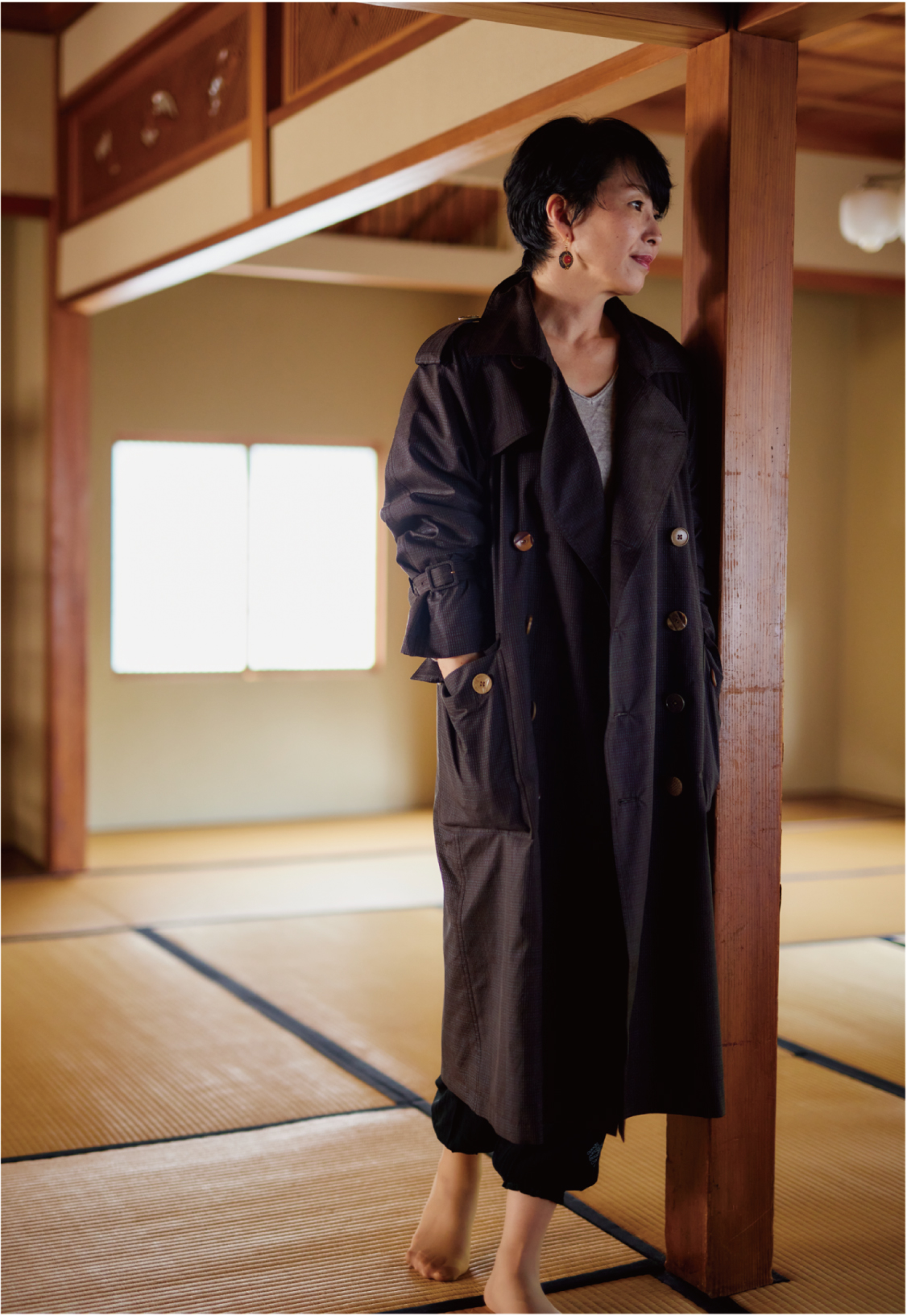
We are delighted to transform exquisite, precious kimono fabrics into modern sartorial masterpieces. The Oshima tsumugi trench coat epitomizes AITTA’ s craftsmanship— representing not only what we can create but also what only we can create.
私たちは、秀逸な和服地を着用することのできる1着に仕立て直す事を心がけています。
大島紬のトレンチコートは、AITTA がつくるべき製品、そしてAITTA にしかつくることのできない製品です。